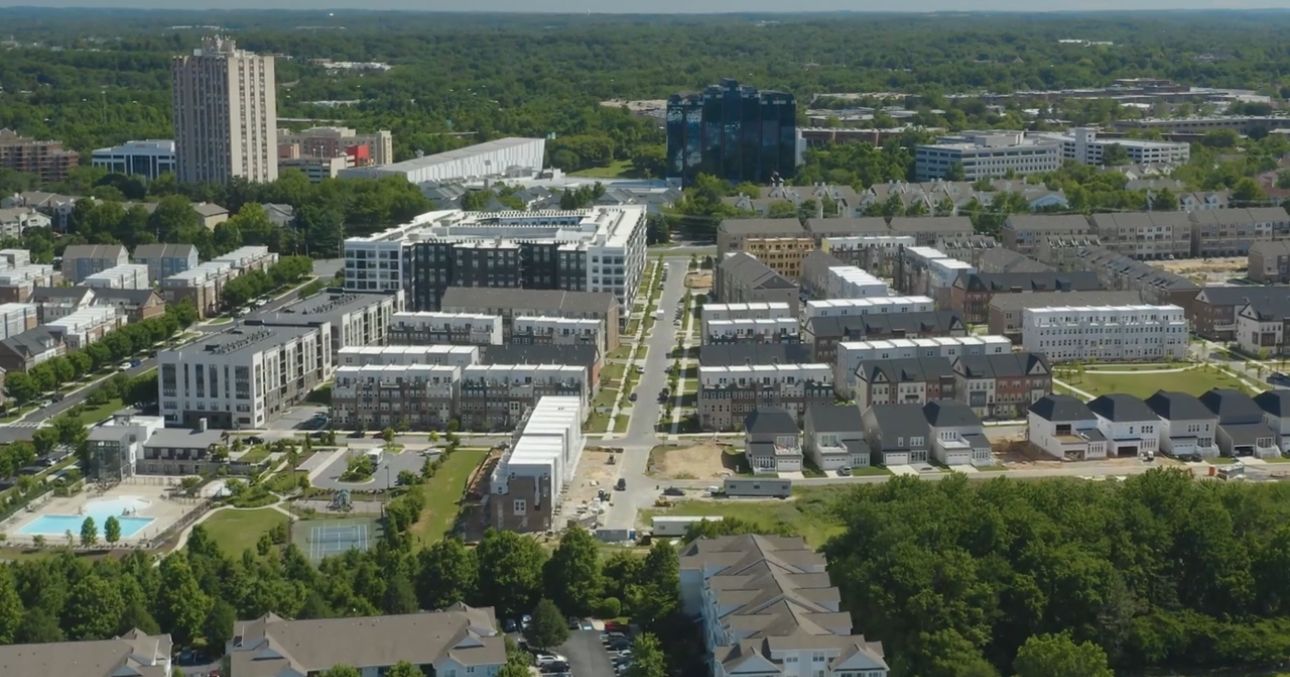
Montgomery Planning staff will present recommendations for the plan during an online meeting October 23 and an in-person meeting October 25
The Montgomery County Planning Department will host an online-only community meeting for the Great Seneca Plan: Connecting Life and Science on Monday, October 23 at 7 p.m. and an in-person community meeting on Wednesday, October 25 at 7 p.m. At both meetings, Montgomery Planning staff will provide an overview of the plan including its organization and preliminary recommendations for the built, social, natural, and economic environment, as well as recommendations for implementing the plan. The department’s plan team will also take in public feedback on the plan and its preliminary recommendations at the meetings.
About the Great Seneca Plan: The Great Seneca Plan: Connecting Life and Science is an effort to examine the Great Seneca community, to identify strengths and needs, and to create a vision for the future of communities in the heart of the I-270 Corridor between Rockville and Gaithersburg. It is a comprehensive update to the 2010 Great Seneca Science Corridor Master Plan and a follow up to the 2021 Great Seneca Science Corridor Minor Master Plan Amendment.
Plan Boundary: The planning area is in the heart of the I-270 Corridor and is completely or nearly surrounded by the City of Gaithersburg, the City of Rockville and the Town of Washington Grove. It includes Adventist Healthcare at Shady Grove, the National Institute of Standards and Technology (NIST), the Universities at Shady Grove, and the Life Sciences Center. In addition to the life sciences industry hub, the plan area is home to residential communities and neighborhoods such as Quince Orchard and Rosemont, as well as the Camden Shady Grove, Axis at Shady Grove, Mallory Square, Londonderry, Decoverly, and Traville apartments.
Preliminary recommendations will be shared for each of the plan’s distinct geographic enclaves including:
- Life Sciences Center
- Quince Orchard
- National Institute of Standards and Technology (NIST) and Londonderry-Hoyles Addition
- Rosemont
- Oakmont and Walnut Hill
- Washingtonian Light Industrial Park
- Washingtonian Residential
- Hi Wood
A summary of the preliminary recommendations will be available on the Great Seneca Plan website in advance of the meetings.
Meetings Details
Monday, October 23 at 7 p.m.
Online community meeting held via Zoom.
Participants must RSVP to attend.
Wednesday, October 25 at 7 p.m.
In-person community meeting
Lakewood Elementary School (2534 Lindley Terrace, Rockville, MD 20850)
RSVPs are encouraged but not required to attend.
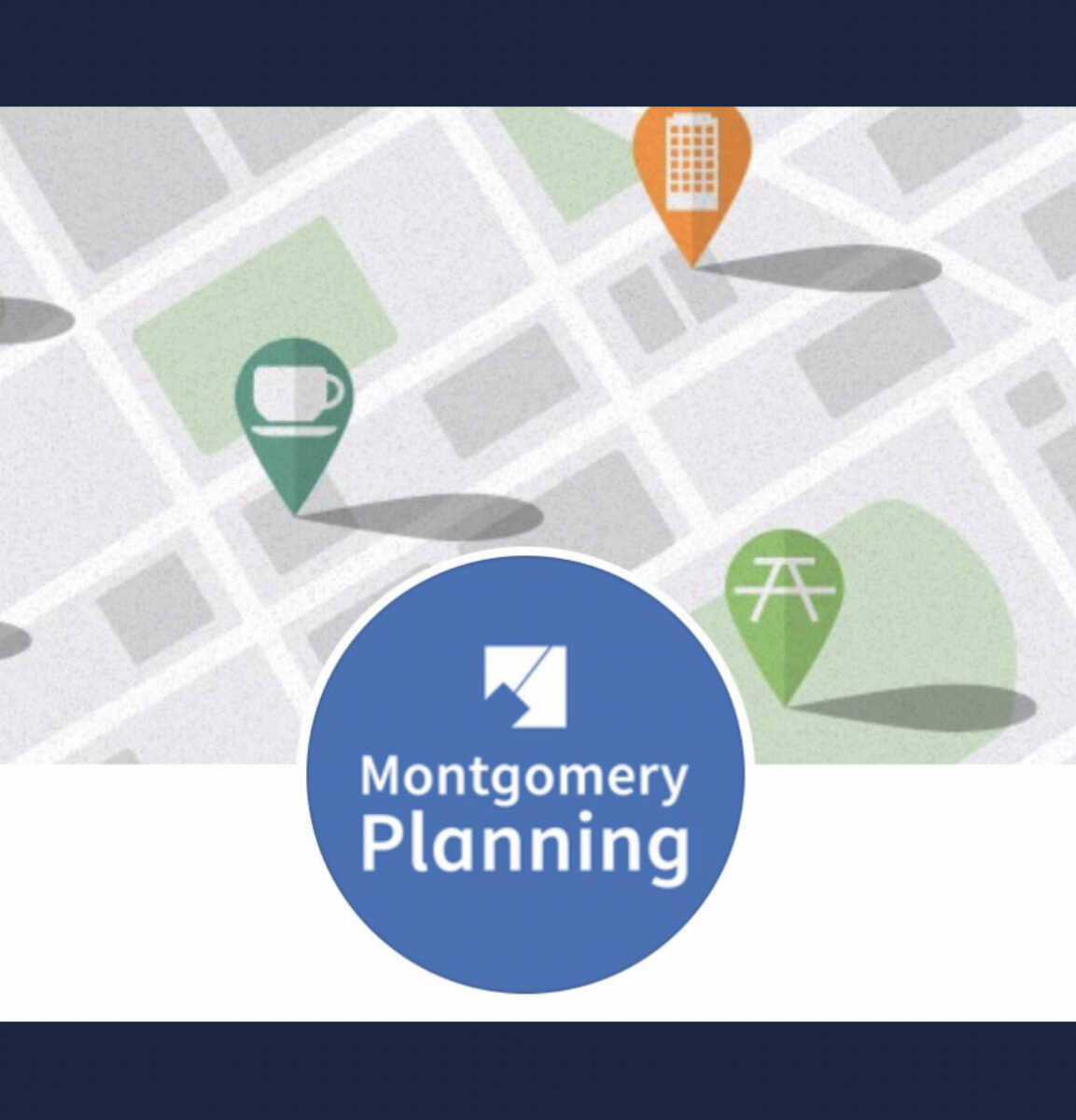
From the Office of Council President Evan Glass (3.28.23): The Montgomery County Council voted unanimously today to reaffirm the appointment of Mr. James Hedrick to serve as a member on the Montgomery County Planning Board.
Mr. Hedrick was appointed by the Council to become a Planning Board member on Feb. 28, 2023. On March 24, the Council received notification from County Executive Marc Elrich on his decision to disapprove James Hedrick’s appointment to the Planning Board.
“The Council reaffirmed our support for Mr. Hedrick because his insight and housing expertise have served and will continue to serve our community well,” Council President Evan Glass said. “We remain confident in his ability to ably and effectively serve the County residents on the Planning Board.”
“The Planning Board is vital to the County’s functions and the strength of the board will be its diversity in opinion – no one candidate will meet all of our political views, nor should they,” continued Glass. “I continue to fully support Mr. Hedrick, who has already participated in three Planning Board meetings as a very engaged member. He has spent his career working in community development and affordable housing, and brings this experience to his work at the Planning Board.”
Nine votes were needed to reaffirm Mr. Hedrick’s position on the Planning Board. The Council acted swiftly and deliberately to discuss the County Executive’s decision, as Councilmembers remain focused on maintaining and supporting the essential work of the Planning Board.
The Montgomery County Planning Board serves as the Council’s principal adviser on land use and community planning. Planning Board members also serve as commissioners of the Maryland-National Capital Park and Planning Commission.
Some of the Planning Board’s responsibilities include preparing and proposing amendments to the County’s General Plan, master plans, and functional plans, and preparing and making recommendations on text amendments to the Montgomery County Zoning Code.
The Planning Board also sits as the Park Commission. It is responsible for submitting the annual Parks Department operating budget and capital improvements program and deals with land acquisition contracts, major development contracts for parks, and development plans for individual park facilities.
The Council continues its recruitment for a new Planning Board chair and one additional planning board member. The application deadline is April 3 at 5 p.m. Learn more.

On September 19, the Maryland State Highway Administration announced that the current closure of Brookeville Road, between Georgia Avenue (MD-97) ,and Grayheaven Manor Road, has been extended through late November. According to the State Highway Administration, the newly–extended duration of the Brookeville Road closure will allow contractors to efficiently complete Brookeville Bypass construction tasks.
The State Highway Administration recommends utilizing Georgia Avenue (MD-97) and Olney Laytonsville
Road (MD-108) as alternate routes during the Brookeville Road closure. The Brookeville Bypass project is currently 72 percent complete. The project includes a new 0.7-mile, two-lane highway with bicycle-compatible shoulders between north of Goldmine Road and south of Holiday Drive. Once complete and open to traffic, the new roadway will make Georgia Avenue more accessible and safer for local residents, cyclists, and pedestrians. The project also includes construction of two bridges – one at Meadow Branch stream and the other at Reddy Branch stream – and two single-lane roundabouts that will improve traffic and safety operations. MD 97 functions as a major north-south commuter route between Brookeville and northern Montgomery and Frederick counties.
MD 97 has a 90-degree curve at Market Street, which is accompanied by a steep hill.
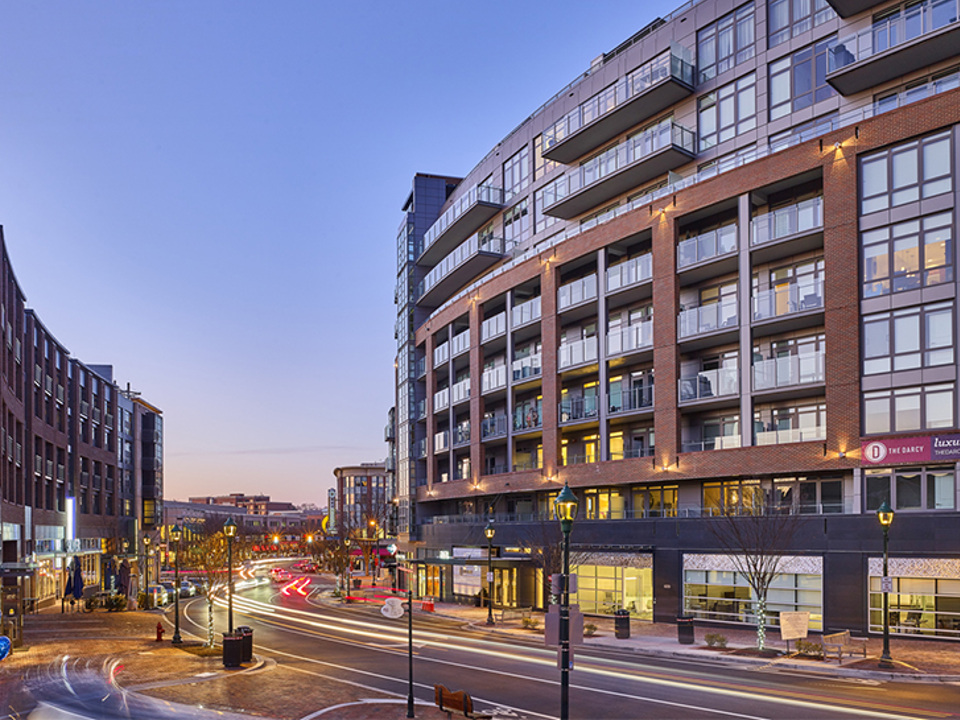
The Montgomery County Planning Department briefed the Montgomery County Planning Board on the update to the implementation of the 2017 Bethesda Downtown Sector Plan at their meeting on July 28, 2022. The 2022 Annual Monitoring Report details the plan’s progress between May 2021 and May 2022 on school capacity, new parks and open spaces and transportation adequacy. The report also presents information on recent development activity in downtown Bethesda and the status of the Bethesda Overlay Zone (BOZ).
View the 2022 Bethesda Monitoring Report.
This annual monitoring report is presented to the Planning Board in the spring/summer of each year and transmitted to the Montgomery County Council for review.
Highlights from the report
- Construction: The following projects are currently under construction: 7000 Wisconsin Avenue, Metro Tower, 8015 Old Georgetown Road, 7607 Old Georgetown Road, the Claiborne, and Auburn Avenue.
- Schools: In the current academic year, schools in the Bethesda-Chevy Chase cluster are experiencing the following capacity utilization rates: 88% at the elementary school, 78.3% at the middle school and 96.7% at the high school.
- Parks and Open Space: Since 2017, sixteen development sites have been approved with Park Impact Payments (PIPs) requirements totaling over $19 million. So far, eight PIPs have been submitted totaling $14,244,808, and the remaining approved PIPs are expected to be paid during the next few years.
- Transportation: The County Executive and Montgomery County Department of Transportation are no longer pursuing the Bethesda Unified Mobility Program (BUMP) and are exploring alternative funding mechanisms for local infrastructure.
- Implementation Committee: The Planning Board reappointed three members to additional terms and appointed two new members to the Bethesda Downtown Plan Implementation Advisory Committee (IAC).
- Design: The Design Advisory Panel has reviewed four new projects since April 2021: 4901 Battery Lane, 8001 Wisconsin Avenue, 4725 Cheltenham Drive, and 7126 Wisconsin Avenue.
Bethesda Overlay Zone (BOZ) Update
The Bethesda Downtown Sector Plan recommended the creation of the Bethesda Overlay Zone. The Montgomery County Council, through Zoning Text Amendment 16-20, Ordinance No. 18-28, adopted the Bethesda Overlay Zone in July 2017 to implement the recommendations of the Bethesda Downtown Sector Plan as it relates to density, building heights, affordable housing goals, parks and open space and design.
About the Bethesda Downtown Plan
The 2017 Approved and Adopted Bethesda Downtown Sector Plan is being implemented through focused coordination between public and private interests. The plan’s vision stems from the goals and recommendations within this Sector Plan to enhance Downtown Bethesda over the next 20 years. The aim of the Plan is to achieve a truly sustainable downtown by focusing on components that will bolster the elements in most need of enhancement including increased parks and open space, affordable housing, environmental innovation, economic competitiveness and design excellence. The Plan’s vision will be implemented through various actions, including zoning, a park impact payment, and annual monitoring and reporting.
Community members are invited to take an online questionnaire in support of the fall placemaking festival, sign up as a festival volunteer, and attend a series of virtual and in-person Visioning Workshops about the future of the plan area
WHEATON, MD – The Montgomery County Planning Department, part of The Maryland-National Capital Park and Planning Commission (M-NCPPC), is hosting several opportunities for the community to get involved with the Fairland and Briggs Chaney Master Plan. These include efforts to support the Fairland and Briggs Chaney Placemaking Festival as well as the plan’s Visioning Phase, starting on June 27 and taking place through the summer.
The Fairland and Briggs Chaney Master Plan is an update to a portion of the 1997 Fairland Master Plan and will establish a clear vision for an equitable, just, and prosperous future for the Fairland community, mirroring the county’s long-term priorities, which include a vibrant economy, equity for all residents, and a healthy environment. The master plan boundary consists primarily of property and communities of Fairland and Briggs Chaney along the US 29 Corridor from near Paint Branch on the south to Greencastle Road on the north.
Fairland and Briggs Chaney Placemaking Festival
On June 1, Montgomery Planning staff held a virtual kickoff meeting for the Fairland and Briggs Chaney Placemaking Festival. During the kickoff event, Montgomery Planning launched the Fairland and Briggs Chaney Placemaking Festival effort. In addition, community members were invited to participate in this effort by providing their ideas and feedback on how to temporarily transform a small portion of the parking lot shared by the Montgomery County Services Center, Eastern Montgomery Regional Services Center, and the Briggs Chaney Park and Ride into a fun and inviting place for residents to visit. The placemaking festival will culminate with a free, community-led event scheduled for October 21 and October 22. If you were unable to attend the virtual kickoff meeting, you can access the kickoff meeting recording and presentation on the Fairland and Briggs Chaney Placemaking Festival webpage.
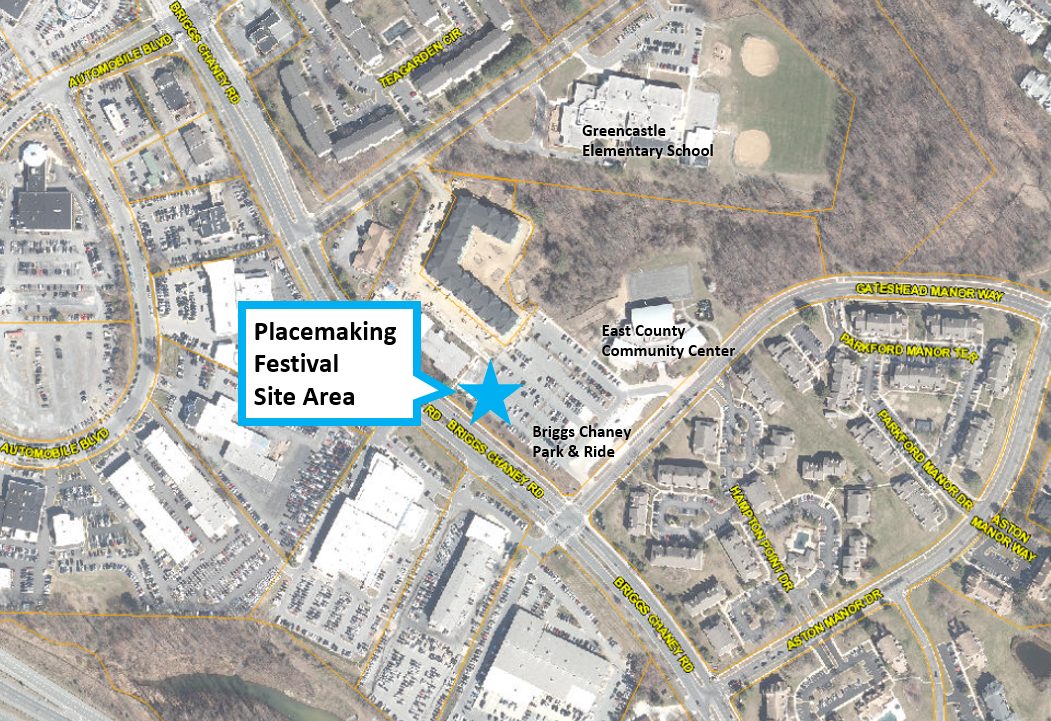
All community members are welcome to respond to the Montgomery Planning team’s questionnaire from now until June 20 to guide the festival’s program and design. Some potential temporary changes could include ground murals, greenery and landscaping, shade, seating, and opportunities for community gathering. Additionally, Montgomery Planning staff hope to test some ideas and get feedback that will be incorporated into the ongoing master planning efforts for the Fairland and Briggs Chaney communities and Montgomery County.
Take the Fairland and Briggs Chaney Placemaking Festival Questionnaire.
The Fairland and Briggs Chaney Placemaking Festival team also invites community members to volunteer to later help create the temporary public open space. Community members will work with the Better Block Foundation team through the summer and fall to build, paint, and construct their ideas and bring them to life. This transformed outdoor space will host food and retail vendors, Montgomery Parks’activities and features, and a welcoming place for residents to gather with their family, neighbors, and friends during the October 2022 public celebration.
Sign up to volunteer to help create the temporary festival space this fall.
Fairland and Briggs Chaney Visioning Workshops
The community is invited to attend virtual and in-person events to share ideas for the future of the Fairland and Briggs Chaney plan area. This phase will kick off with a virtual Visioning Workshop on June 27.
Each Visioning Workshop will include a presentation of the equitable engagement efforts to date, followed by a discussion facilitated by Story Tapestries on the community’s vision. The feedback and ideas collected during the Visioning Workshops will inform Montgomery Planning’s preliminary recommendations for the master plan.
There are two virtual and four in-person Visioning Workshops scheduled. RSVPs are required unless otherwise stated. Please provide at least 10 business days’ notice for ADA or language translation assistance. Virtual sessions will be recorded and posted on the plan’s website.
Virtual Fairland and Briggs Chaney Visioning Workshops
Join Montgomery Planning via Zoom from 6 to 7:30 p.m. on June 27 and July 19 to discuss the master plan update and share your ideas and recommendations for the future of the Fairland and Briggs Chaney communities through a series of interactive activities.
In-Person Fairland and Briggs Chaney Visioning Workshops
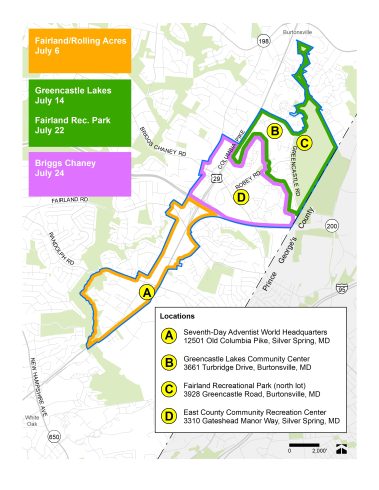
Click map to enlarge
The community is invited to share ideas and feedback in person on July 6, 14, 22, and 24 to help envision the future of the Fairland and Briggs Chaney communities. Each meeting will include a recap of community feedback heard at prior Visioning Workshops. While three of the in-person meetings will be facilitated by Story Tapestries through a series of engaging small group activities that focus on a specific part of the Fairland-Briggs Chaney Master Plan area, ideas for the entire area are welcome at every meeting. Additionally, community members are invited to share their ideas with the master plan team at a family-friendly community event on July 22 at Fairland Recreational Park.
Wednesday, July 6 – Meet at the Seventh Day Adventist Headquarters (12501 Old Columbia Pike, Silver Spring, MD) from 6 to 8 p.m. The conversation will focus on the southern portion of the master plan area.
Thursday, July 14 – Meet at the Greencastle Lakes Community Center (3661 Turbridge Drive, Burtonsville, MD) from 6 to 8 p.m. The conversation will focus on the northern portion of the master plan area.
Friday, July 22 – Meet Montgomery Parks and Planning staff and other community partners for this fun and engaging, family-friendly community event at the M-NCPPC Fairland Recreational Park (3928 Greencastle Road, Burtonsville, MD) in the north lot from 5 to 8 p.m. Food, music, and entertainment will be provided. Participants are encouraged to share ideas on the future of parks and recreation in the Fairland and Briggs Chaney communities, meet community partners from across the county, and grab some free treats. (No RSVP required, community members are invited to stop by between 5 and 8 p.m.)
Sunday, July 24 – Meet at the East County Community Recreation Center (3310 Gateshead Manor Way, Silver Spring, MD) from 2 to 4 p.m. for the last in-person Visioning Workshops with Story Tapestries. The conversation will focus on the central portion of the master plan area.
Community members who register for these events will receive a reminder 48 hours before the event with a request to let Montgomery Planning know if they can no longer attend.
Learn more about what to expect at the Visioning Workshops with the FAQs section of the plan’s webpage.
Additional ways to get involved
- Sign-up for the Fairland and Briggs Chaney E-Letter
- Review the Scope of Work report, Community Engagement report and the Existing Conditions
- Request a meeting and/or send your comments directly to the plan’s co-project managers: [email protected] and [email protected]
Equitable approach to planning
Equity is a foundational goal of the Fairland and Briggs Chaney Master Plan, and racial equity and social justice is an essential theme throughout the planning process. Montgomery Planning is making every effort to understand the historical context and current experience of inequity within the plan area. Community engagement efforts are designed to meet people ‘where they are’ in the community and to provide welcoming, accessible, inclusive, and safe environments in which to learn about the master plan and offer meaningful input in the process. As a complement to the planning process Montgomery Planning is also striving to develop a stronger social network that embraces the advantages of a multi-racial and multi-cultural community.
About the Fairland and Briggs Chaney Master Plan
The Fairland and Briggs Chaney Master Plan is an update to a portion of the 1997 Fairland Master Plan and will establish a clear vision for an equitable, just, and prosperous future for the Fairland community, mirroring the county’s long-term priorities, which include a vibrant economy, equity for all residents, and a healthy environment. The master plan boundary consists primarily of property and communities of Fairland and Briggs Chaney along the US 29 Corridor from near Paint Branch on the south to Greencastle Road on the north. The update will examine and provide policies and recommendations on existing and future land uses and zoning, housing inventory and needs, transportation systems, historic preservation opportunities, area park facilities, and the environment. This master plan will take cues from the equity framework in the update to the county’s General Plan, Thrive Montgomery 2050, which describes how places with equitable access to opportunity produce strong, successful communities. Goals of the Fairland and Briggs Chaney Master Plan include:
- Complete Community: Identify and correct past inequitable development policies to make the Fairland and Briggs Chaney communities more whole and connected by integrating centers of housing, retail, and office development with parks and open space to make 15-minute living a reality for as many people as possible.
- Resilient Economy: Promote economic development and job growth within the plan area and surrounding communities.
- Housing: Promote racial and economic diversity and equity in housing to help rectify past discriminatory housing policies in every neighborhood.
- Arts, Culture and Environment: Support arts and cultural institutions, through parks, open space and environment, recreational programming, and development, to celebrate our diversity, strengthen pride of place, and make the county more attractive and interesting.
- Corridor Growth and Connectivity: Promote and prioritize public and private investment along the Route 29 corridor and neighboring communities to leverage and attract future private investment in community facilities and redevelopment, including a safer, more comfortable network for walking, biking, and rolling that connects the corridor communities.
Featured photo by @DronifyDMV

Per Montgomery Planning:
WHEATON, MD – The Montgomery County Planning Board, part of The Maryland-National Capital Park and Planning Commission (M-NCPPC), has approved draft amendments to Chapter 22A of the Montgomery County Code (the Forest Conservation Law) and Chapter 22A of the Code of Montgomery County Regulations (the Forest Conservation – Trees Regulations) to transmit to the County Council at its April 28, 2022 meeting. The recommended changes are a product of Montgomery Planning’s No Net Loss of Forest Initiative, which seeks to achieve equal or greater area of forest planted than forest removed on a county-wide level, by projects subject to the Montgomery County Forest Conservation Law, while also allowing development to continue moving forward.
The draft amendments to the law and regulations include:
- Increasing the amount of forest that needs to be preserved (forest conservation thresholds) in lower density land use categories, where additional space exists for on-site planting and protection.
- Increasing forest planting (afforestation) requirements in the institutional land use category.
- Increasing reforestation ratios and incentivizing required forest mitigation in the same watershed as the project or in a watershed considered high priority for forest planting or forest preservation.
- Requiring planting of forest in unforested stream valley buffers, with some exceptions, such as if the stream valley buffer is not suitable to establish and retain required forest planting
- Expanding options to create forest ecosystems and increase long-term resilience of planted forests.
Watch the presentation on-demand. Watch an update on the initiative from its project manager.
The No Net Loss of Forest Initiative began in November 2021 and these recommendations are a product of five stakeholder working group meetings. The working group included representatives from 24 different groups, including non-profits, agency representatives, and the development community. Led by Planning’s Forest Conservation staff, the working group reviewed data, reports, other counties’ recent amendments, and analyzed possible amendments using real projects with Forest Conservation Plans. This initiative aligns with several goals of the Montgomery County Climate Action Plan and Thrive Montgomery 2050, which generally include forest retention and restoration, increasing tree canopy, establishing strategies to protect plant diversity while complementing land use policies such as redevelopment, and improving the survivability of planted forests and trees.
Following the Planning Board’s approval, the recommended changes are being transmitted for introduction to the Montgomery County Council. Additionally, the draft amendments are currently under review by Maryland DNR for compliance with the enabling state Forest Conservation Act of 1991.

Verma’s leadership on racial equity and social justice issues recognized in appointment
Per Montgomery Planning:
WHEATON, Md. – Montgomery County Planning Board Commissioner Partap Verma was appointed Vice Chair of the Planning Board on Thursday, February 24, 2022. Planning Board Chair Casey Anderson made the announcement during the Planning Board’s meeting at the Wheaton Headquarters building.
“Partap has provided valuable guidance as a Planning Board member over the last three years and now in his role as Vice Chair, his leadership will allow us to continue to work to advance the goals of reaching community equity, environmental resilience and economic competitiveness.”
As Vice Chair of the Planning Board, Verma will assume the leadership role of the Chair in his absence, overseeing Board meetings and regulatory decisions.
“I am honored to assume the role of Vice Chair of the Planning Board,” said Verma. “We have been making progress, but we still have important work ahead of us related to welcoming underserved residents into the planning process, strengthening our economic health in the region and pursuing environmentally friendly policies. I look forward to working with our community members as we work to keep Montgomery County thriving.”
Appointed to the Planning Board by the Montgomery County Council in June 2019, Verma has made significant contributions to the Planning Board, Planning Department and Department of Parks. He has been involved with many important plans, projects and policies including the Forest Glen/Montgomery Hills Sector Plan, Silver Spring Downtown and Adjacent Communities Plan, Thrive Montgomery 2050, Corridor Forward, the update to the Growth and Infrastructure Policy, Attainable Housing Strategies, Pedestrian Master Plan and Vision Zero initiatives. Verma has supported many significant park projects and plans as well including approval the 2022 Parks, Recreation and Open Space Policy Plan, and the FY23 – 28 Capital Improvements Program. Verma has also served as Chair and member of the County Council-appointed Montgomery County Racial Equity and Social Justice Advisory Committee.
Verma is a lifelong Montgomery County resident, a product of Montgomery County Public Schools and was once a participant in the Free and Reduced-Price Meals program. Commissioner Verma, who is proud of his east county roots raised by immigrant parents, is a dad, husband and a member of the LGBTQ community residing in Forest Glen.
About Vice Chair Verma
Verma, a certified mediator, specializes in privacy law, FOIA, agile development and alternative dispute resolution. Prior to joining the Department of Homeland Security (DHS), he served as general counsel at the U.S. Department of State, specializing in interagency information sharing, national security issues and immigration law. He also worked as a consular officer in Turkey and India as well as on task forces supporting crises around the world.
Prior to his appointment to the Planning Board, Verma represented Forest Glen issues at Montgomery County’s Mid-County Citizens Advisory Board as the land use chair and served on the executive board for Sierra Club Montgomery. Additionally, he served as a mediator and panel attorney for the Montgomery County Department of Housing and Community Affairs’ Commission on Common Ownership Communities. Verma is also the founder of Friends of Forest Glen and Montgomery Hills and the blog “Finding Forest Glen.”
Verma received a law degree with honors from the Pennsylvania State University School of Law in 2005 along with certificates in transnational law from Duke University and comparative law from the University of London. In 2001, he received a Bachelor of Arts degree in political science from the University of Maryland.

Community Engagement Report highlights the initial outreach process, data, and findings for the Fairland and Briggs Chaney Master Plan.
The Montgomery County Planning Department presented the Fairland and Briggs Chaney Master Plan Community Engagement Report to the Montgomery County Planning Board at their February 3, 2022 meeting. The report offers a summary of the initial community outreach and engagement activities, preliminary findings, and next steps for the plan.
Throughout the process, planners have engaged residents, business owners and other stakeholders through a series of in-person and virtual options. Materials and listening sessions were translated into different languages to encourage equitable participation with the area’s population. To date planners have:
- Received comments from more than 700 residents in the plan area.
- Held a speaker series, call “CommUNITY Conversations in Fairland” that highlighted people-first planning Fairland and the work of neighborhood influencers.
- Hosted four listening sessions to gather information on community concerns and document individual stories.
- Partnered with Everyday Canvassing to knock on over 3,850 doors to conduct in-person interviews.
- Conducted a pedestrian audit of the plan area to highlight opportunities for the plan to make recommendations to be more friendly to walk and roll.
- Reached out via online surveys, formal and informal community meetings, mailings and other tools.
Read the Community Engagement report.
“The overall outreach and engagement strategy has been a focused on putting people first,” said Upcounty Master Planning Supervisor Don Zeigler. “The community is the backbone of this plan process, and we have been happy to have been able to speak to so many residents in the plan area.”
Next steps
Planners will continue to engage the community throughout the process. Continued efforts include focus groups, business and property owner canvassing, a pedestrian audit toolkit and a public photo contest. As the plan shifts to other phases, the Working Draft of the plan will be presented to the Planning Board sometime in Fall 2022. A public hearing for the plan will be held in late 2022 or early 2023.
If you are interested in the Fairland and Briggs Chaney Master Plan, sign up for the plan’s eletter or contact Project managers:
[email protected] or [email protected]
About the Fairland and Briggs Chaney Master Plan
The Fairland and Briggs Chaney Master Plan is an update to a portion of the 1997 Fairland Master Plan and will establish a clear vision for an equitable, just, and prosperous future for the Fairland community, mirroring the county’s long-term priorities, which include a vibrant economy, equity for all residents, and a healthy environment. The master plan boundary consists primarily of property and communities of Fairland and Briggs Chaney along the US 29 Corridor from near Paint Branch on the south to Greencastle Road on the north. The update will examine and provide policies and recommendations on existing and future land uses and zoning, housing inventory and needs, transportation systems, historic preservation opportunities, area park facilities, and the environment. This master plan will take cues from the equity framework in the update to the county’s General Plan, Thrive Montgomery 2050, which describes how places with equitable access to opportunity produce strong, successful communities. Goals of the Fairland and Briggs Chaney Master Plan include:
- Complete Community: Identify and correct past inequitable development policies to make the Fairland and Briggs Chaney communities more whole and connected by integrating centers of housing, retail, and office development with parks and open space to make 15-minute living a reality for as many people as possible.
- Resilient Economy: Promote economic development and job growth within the plan area and surrounding communities.
- Housing: Promote racial and economic diversity and equity in housing to help rectify past discriminatory housing policies in every neighborhood.
- Arts, Culture and Environment: Support arts and cultural institutions, through parks, open space and environment, recreational programming, and development, to celebrate our diversity, strengthen pride of place, and make the county more attractive and interesting.
- Corridor Growth and Connectivity: Promote and prioritize public and private investment along the Route 29 corridor and neighboring communities to leverage and attract future private investment in community facilities and redevelopment, including a safer, more comfortable network for walking, biking, and rolling that connects the corridor communities.
Featured photo by @DronifyDMV
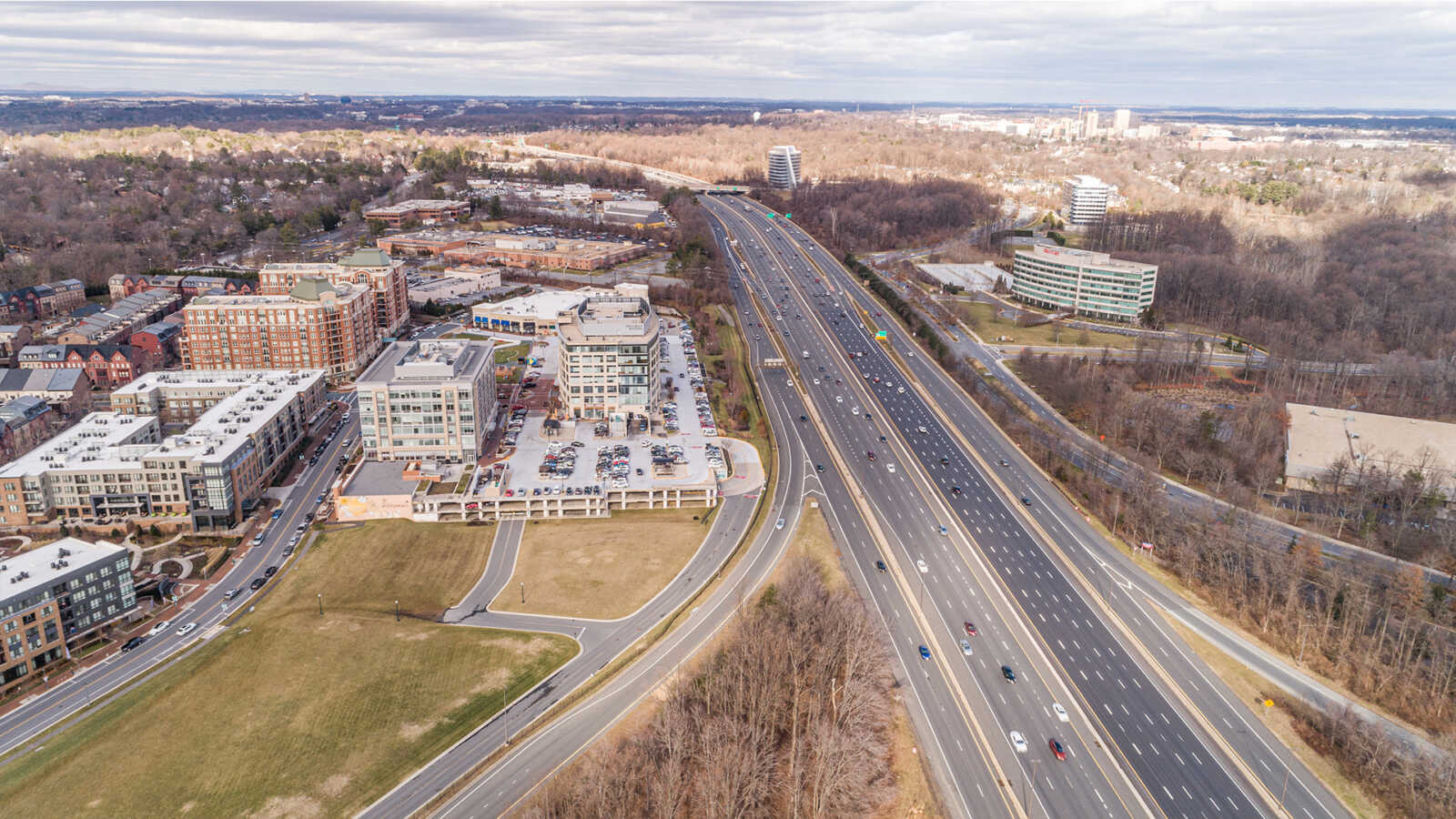
Sign up to testify at Montgomery County Council’s Public Hearings for Corridor Forward: The I-270 Transit Plan and the Silver Spring Downtown and Adjacent Communities Plan, plus more ways to get involved.
WHEATON, MD – The Montgomery County Planning Board and the Montgomery County Planning Department, both part of The Maryland-National Capital Park and Planning Commission (M-NCPPC), have announced their February 2022 calendar of meetings. The Planning Board has suspended in-person participation and attendance at meetings due to the recent increase in COVID-19 positive cases in Montgomery County until further notice.
Residents can participate in Planning Board meetings by testifying virtually and watching the meetings on the Planning Board’s live stream. Community members may sign up to testify and provide comments through Microsoft Teams or over the phone to the Board during the meeting on specific agenda items. Written testimony may be submitted in advance of the meeting. For accessibility accommodations, contact us.
There are many ways to participate in Planning Board meetings:
- Watch the Planning Board meeting live online, and on demand.
- Listen live over the phone to the Planning Board meeting by calling: 866-774-0898 Password: 24252020
- Sign up to testify via Microsoft Teams or over the phone during the Planning Board meeting. To testify, fill out the Sign Up to Testify form by 12 noon on the day before the Planning Board meeting.
- On the afternoon before the meeting, you will receive an email with a phone number to call during a designated time to provide your testimony for a specific agenda item. Submitting this form online by the deadline is the only way to testify on meeting items.
- If you have questions, send an email to [email protected] or leave a message at 301-495-4605 and a staff member in the Planning Board Chair’s office will contact you.
- Email your written testimony with comments on specific Planning Board agenda items to [email protected] by 12 noon on the day before the Planning Board meeting. Items received after this date and time will not be included in the record.
- If you are signing up to testify on a Consent Agenda Item listed on the Planning Board agenda, please note that the Chair will determine the time for a full hearing on any Consent Agenda Items at the beginning of the Planning Board Meeting, and it may be the same day or it may be a date in the future, based upon the Board’s schedule. Accordingly, please be prepared to testify on the same day and provide any written materials by 12 noon the day before the meeting.
- For ADA accommodations or to request materials in alternate formats, consult the Montgomery Planning Accessibility webpage or contact the Montgomery Planning ADA Coordinator at 301-495-1324.
For more details, review the list of events below and visit www.montgomeryplanning.org. These events are subject to change.
February 2 – The Historic Preservation Commission will hold its meeting online. To testify on an agenda item, sign up no later than 9 a.m. the day before the hearing. Consult the HPC meeting webpage for agenda information.
February 3 – The Planning Board will hold its meeting online. Consult the Planning Board’s agenda, posted 10 days before the meeting for more information. Watch the meetings online via live stream or review previous meetings on demand.
February 10 – The Planning Board will hold its meeting online. Consult the Planning Board’s agenda, posted 10 days before the meeting for more information. Watch the meetings online via live stream or review previous meetings on demand.
February 15 – The Montgomery County Council will hold a virtual Public Hearing on the Planning Board Draft of the Corridor Forward: The I-270 Transit Plan (7:30 – 9:30 p.m.). Sign up to testify. Consult the County Council’s agenda for more information. Watch the Public Hearing online via live stream.
February 16 – The Historic Preservation Commission will hold its meeting online. To testify on an agenda item, sign up no later than 9 a.m. the day before the hearing. Consult the HPC meeting webpage for agenda information.
February 17 – The Planning Board will hold its meeting online. Consult the Planning Board’s agenda, posted 10 days before the meeting for more information. Watch the meetings online via live stream or review previous meetings on demand.
The Montgomery County Council will hold a virtual Public Hearing on the Planning Board Draft of the Silver Spring Downtown and Adjacent Communities Plan (7:30 – 9:30 p.m.). Sign up to testify. Consult the County Council’s agenda for more information. Watch the Public Hearing online via live stream.
February 24 – The Planning Board will hold its meeting online. Consult the Planning Board’s agenda, posted 10 days before the meeting for more information. Watch the meetings online via live stream or review previous meetings on demand.
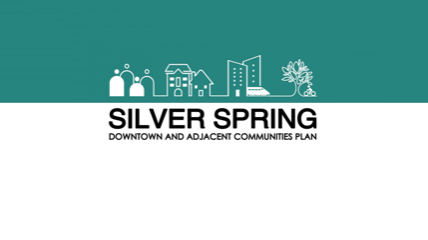
Planning Board work sessions scheduled for December 16 and 23, 2021 and January 6, 2022; the community is invited to watch via live video stream
Per Montgomery Planning:
Wheaton, MD –The Montgomery County Planning Board held its first work session for the Silver Spring Downtown and Adjacent Communities Plan on December 9, 2021. Planning Board members worked with Montgomery Planning staff to review the plan for its first of four scheduled work sessions. This follows the Planning Board’s Public Hearing on December 2, 2021, during which community members testified in person and virtually on the plan.
During the first work session, the Planning Board reviewed key plan recommendations related to parks and public spaces, historic resources, environmental resiliency, and schools. The Board also reviewed language in the plan that addresses compliance with Montgomery County’s Racial Equity and Social Justice Act. Equity is woven throughout the plan and is reflected in the four overarching themes that emerged after engaging with stakeholders: diversity, resiliency, connectivity, and community health.
“The Silver Spring Downtown and Adjacent Communities Plan is the first Sector Plan to follow the passage of Montgomery County’s Racial Equity and Social Justice Act,” said Montgomery Planning Director Gwen Wright. “We took care to understand the historic advantages and disadvantages that have impacted Silver Spring stakeholders and we have proposed recommendations that encourage more equitable access to investment and civic resources.”
Read the Public Hearing Draft.
Watch the History of Silver Spring – Montgomery Planning Board briefing.
The Silver Spring Downtown and Adjacent Communities Plan builds upon the success of the 2000 Silver Spring Central Business District Sector Plan to help the area continue to be a regional destination for the next 20 years while supporting sustainable growth and development in the emerging areas of the downtown and adjacent communities. The plan’s Public Hearing Draft includes recommendations for land use and zoning, housing, economic growth, urban design, transportation, parks and public spaces, environmental resiliency, community facilities, and historic resources.
The Board will observe the following work session schedule during its Planning Board meetings. Please note that these topics are subject to change and additional topics may be brought up during these work sessions as time may allow:
December 16, 2021
- Urban Design
- Transportation
- Economic Growth
- Land Use and Zoning
- Implementation
December 23, 2021
- Housing
- Review edits from 12/9 work session
January 6, 2022
- Review all edits
- Review any additional key text changes
- Vote out to transmit Planning Board Draft Plan to Montgomery County Council
Watch the recording of the Planning Board’s Public Hearing.
View the explainer.
Community members can watch the work sessions online via live stream on the Planning Board’s website. The community is invited to submit written comments to the Planning Board via email at [email protected], although these comments will not be included in the public record for the Public Hearing Draft, which is now closed. There will be another opportunity for community members to testify publicly after the Planning Board Draft of the plan is transmitted to the Montgomery County Council.
To stay up to date on the progress of this plan, sign up for our eLetter. You can also reach out directly to the project team with any questions or comments about the plan:
Atara Margolies, lead planner
301-495-4558
[email protected]
About the Downtown Silver Spring and Adjacent Communities Plan
The 2000 Silver Spring Central Business District Sector Plan established a planning framework for downtown Silver Spring that envisioned a green, transit-oriented and pedestrian-friendly downtown with a strong commercial and residential development market. In the 20 years since the adoption of the downtown Silver Spring Sector Plan, the area has transformed from an area in decline to a vibrant destination for offices, retail, restaurants, and entertainment that is defined by its unique diversity. Montgomery Planning is updating the downtown Silver Spring Sector Plan to guide Silver Spring’s future growth.
Through the Silver Spring Downtown and Adjacent Communities Plan process, Montgomery Planning will analyze and reevaluate all aspects of the existing plan, consider the recommended changes implemented from the last plan, and assess future needs – all informed by community conversation and input. View the plan’s Scope of Work that the Planning Board approved in June 2020.
About the Equity Agenda for Planning
Montgomery Planning recognizes and acknowledges the role that our plans and policies have played in creating and perpetuating racial inequity in Montgomery County. We are committed to transforming the way we work as we seek to address, mitigate, and eliminate inequities from the past and develop planning solutions to create equitable communities in the future. While it will take time to fully develop a new methodology for equity in the planning process, we cannot delay applying an equity lens to our work. Efforts to date include:
- Developing an Equity Agenda for Planning. The Planning Board approved Equity in Master Planning Framework, and staff is working on action items.
- Prioritizing equity in Thrive Montgomery 2050. Community Equity is one of the three priority areas of our county General Plan update, Thrive Montgomery 2050.
- Focusing on equity in upcoming plans. Equity is a central focus of the Silver Spring Downtown and Adjacent Communities Plan, the first master plan to launch since Montgomery County’s Racial Equity & Social Justice Act passed. All upcoming plans and studies will have an equity focus.
- Created an Equity Focus Areas mapping tool and developing a Community Equity Index. Equity Focus Areas in Montgomery County have high concentrations of lower-income people of color, who may also speak English less than very well. Montgomery Planning developed this data-driven tool to identify and map these areas to assess potential racial and social inequities and produce master plans that will foster more equitable outcomes for communities in Montgomery County. The Community Equity Index will expand on the previous Equity Focus Area analysis, creating a more robust, diagnostic tool providing additional detail of critically selected neighborhood characteristics relevant for equity analysis countywide.
- Viewing management and operations through an equity lens. Our efforts are not limited to the master planning process. Management and operational functions like communications and human resources are developing approaches, tools, plans, and training to ensure that we look at everything through an equity lens.
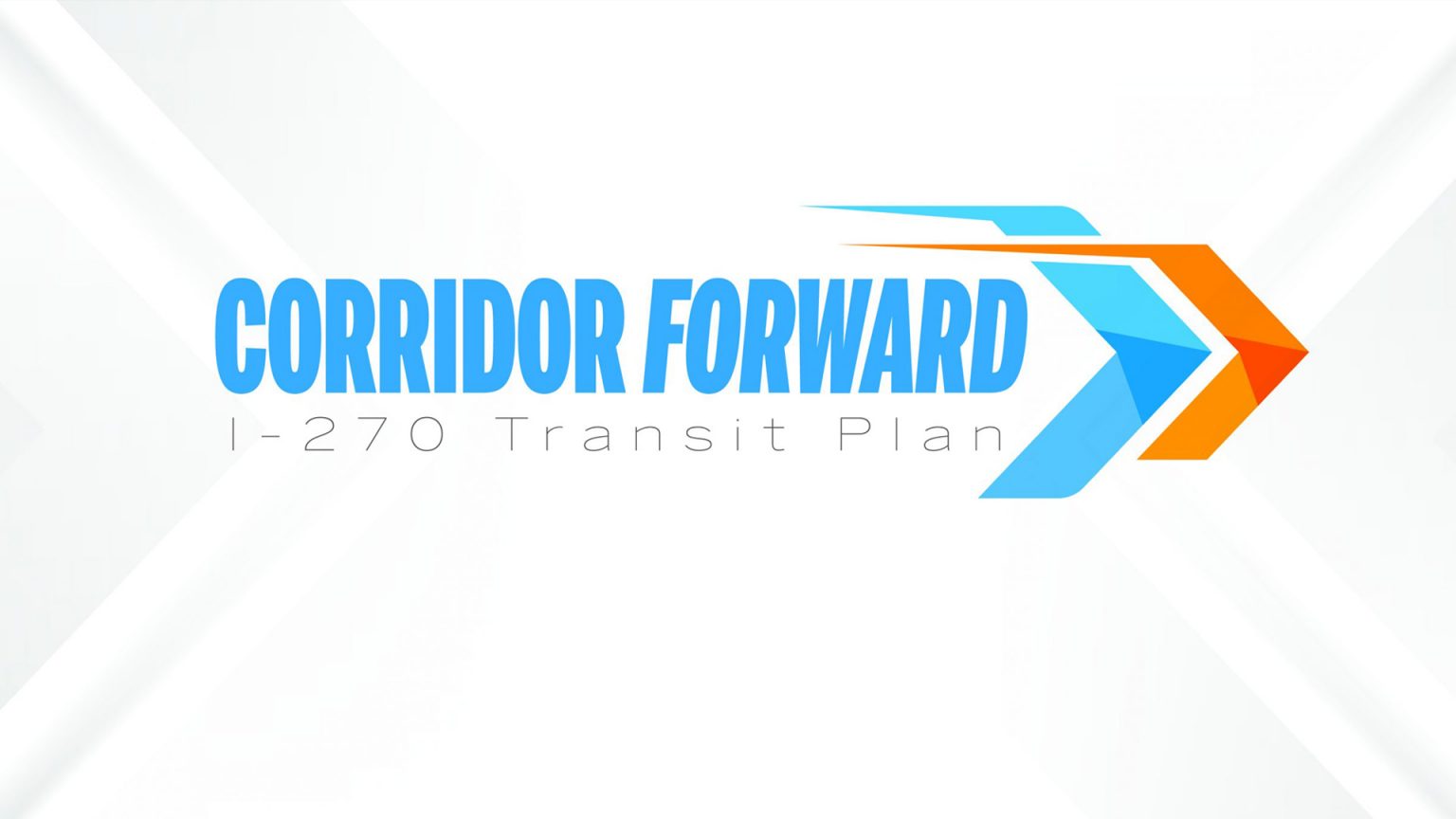
Public invited to provide testimony on the proposed plan for transit network along the I-270 corridor
Per Montgomery Planning:
Montgomery Planning will hold a public hearing for the Corridor Forward: The I-270 Transit Planon December 9 (starting at 6:30 p.m.).
The meeting will be held at the M-NCPPC Wheaton Headquarters, broadcast live online and will be available on demand after the meeting. Residents are invited to testify in person (vaccination proof is required) or virtually.
Sign up to testify for the December 9 Public hearing and learn more about testifying at the Planning Board. The public hearing was set on November 4 after a briefing to the Planning Board..
View the Public Hearing Draft of the Corridor Forward: I-270 Transit Plan.
The draft Plan, developed by the Montgomery County Planning Department, proposes a near-term transit network of dedicated bus lanes known as the Corridor Connectors that build on existing master planned projects, including the MD 355 and Veirs Mill Road Bus Rapid Transit (BRT) projects, to serve communities and employment centers along the I-270 corridor. Additionally, Corridor Forward includes an ambitious long-term recommendation for an extension of Metrorail’s Red Line to further expand transit options along the I-270 corridor. This Draft Plan re-envisions the master planned Corridor Cities Transitway (CCT) as the Corridor Connectors, a network of more buildable dedicated bus lanes which connect I-270 corridor communities to the county’s existing and planned rapid transit network.
Beyond the proposed network, Corridor Forward offers additional recommendations that support the proposed transit network and strengthen the potential to advance regional transit connectivity.
The Public Hearing Draft is the result of an iterative planning process, in which Planning staff:
- Compared transit vehicle attributes and inventoried transit options that could serve the I-270 Corridor.
- Completed a pre-screening analysis, which evaluated the initial list of inventoried transit options based on indicators such as travel time, population access, job access, ability to accommodate growth and equitable access and advanced six transit options for detailed analysis.
- Refined and analyzed the six transit options, including an evaluation of strategic metrics, economic and financial outlook, and potential implementation challenges and risks.
- Completed additional evaluation on combinations of the six transit options to inform the development of the Plan’s recommendations.
The draft Plan is a product of more than two years of transportation analysis, stakeholder coordination and community outreach.
Updated Corridor Forward Plan Schedule
The community will have the opportunity to continue to provide comment and testimony through the Planning Board process.
- December 9 – Planning Board Public Hearing
- December 16 – Anticipated Planning Board work session #1
- December 23 – Anticipated work session #2 and Planning Board vote to transmit to County Council
About the Corridor Forward Plan
The goal of Corridor Forward is to comprehensively evaluate, prioritize and advance transit options in the I-270 corridor area that achieve the best combination of the following values, consistent with the Planning Board Draft of Thrive Montgomery 2050:
- Strategic Connections: Serve high-demand origin and destination pairs, balancing costs of implementation with projected benefits.
- Economic Health: Enable existing development and master-planned communities to realize their potential as livable and economically vibrant places.
- Community Equity: Align with the county’s social equity goals and principles.
- Environmental Resilience: Operate sustainably and reduce negative environmental impacts.
To create the plan, Montgomery Planning has worked with state and county agencies, neighboring jurisdictions, county municipalities, advocacy groups, and community members as we analyzed and prioritized transit options to develop the Public Hearing Draft. Montgomery Planning has engaged community members about their needs and values related to transit through the Corridor Forward Plan’s Transit Values Questionnaire and Transit Stories campaign.

